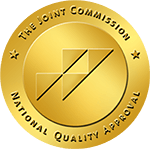Once you have made the choice to begin your recovery journey and get sober, it is important to find a safe space—either physically or metaphorically. A safe space refers to a person, place, thing, or mindset that you can go to when things feel chaotic or you seem unsure of an aspect of your recovery. A lot of addicts have undergone extensive trauma in their lives. Many of them have unresolved issues surrounding their past and are in the process of using counseling as a tool to work on some of that trauma.
By creating a safe space in recovery, you will have an automatic go-to in order to ground yourself, feel protected, and get the support you need.
What does safe space mean?
Feeling safe and secure can mean something different to each individual in recovery. This feeling comes from a place within you based on your experiences, preferences, and ideas of what you believe you need to have a successful recovery. What you deem as safe can come from you or coming up with ideas can be a collaborative effort between you and your treatment team and/or loved ones.
A safe space may look like these five ideas:
1. Create a physical environment free from drugs, alcohol, and paraphernalia.
As a recovering addict, this must be a priority. It is imperative that you clean your home, vehicle, workspace, etc. from top to bottom and eliminate everything that is, was, or resembles anything to do with your addiction. Think of it as decluttering so that you will have room to bring in more positive and healthy things into your life. Being free of something can also mean ridding yourself of negative influences and certain people who will not support your recovery.
2. Identify multiple people you can go to if you are ever in crisis.
While you are liberating yourself from the unfavorable people in your life, think about who you can invite in to fill those gaps in a much more effective and positive way. These people should be friends, family, and mentors that you can turn to in times of distress—or people you simply can open up to and be vulnerable with. These important people are non-judgmental, understand your addiction, and are willing to be there for you through thick and thin. Choosing a few people—if possible—is best just in case one is not available when you need them.
3. Fill your life with positivity.
Starting the recovery process is a time for big life changes. It means out with the old and in with the new. It also means that you are responsible for letting go of the negative and allowing positivity to flow in your life. There are numerous ways you can be more positive and celebrate the huge steps you’ve made in your recovery. Think of small constructive things you can do throughout the day to put a smile on your face or get a rush of dopamine (in a healthy way!). There is a science to positivity! Some ideas or activities may seem cheesy, but they can work wonders.
4. Find safety in your community.
Finding new ways to feel safe at home is important and locating safe spaces out in the community is as well. There are a variety of community resources available to recovering addicts. Join a sober meetup or begin volunteering. Locate places in and around your community that bring you a sense of peace. Examples of this are a body of water, a park, a walking trail, or your favorite restaurant or store. Traveling to a friend or family’s home may also bring you peace. Sometimes it’s good to get away and change up the scenery.
5. Reorganize your home and/or work environment to be more comfortable and welcoming.
Similar to ridding your environment of anything related to your addiction, switching things up a little might do you some good. Transforming your living room or bedroom by getting new furniture or decorations is an example. Making your surrounding more peaceful and comfortable is key when creating a safe space. Have items around that you love and that bring you a sense of calm. Maybe buy a new fuzzy, weighted blanket, add in some indoor plants here and there, or buy wall art that is inspiring and has meaning for you. Sometimes making a few easy changes to the environment can go a long way.
How to Get Started Creating Your Perfect Safe Space
Envision what the perfect safe space will look like for you. Make a list of what you fear and what you do not want part of your life any longer. Next, make a separate list for all of your living environments and how you can make them into safe spaces for when you may need them. Your work, home, community, and even your vehicle should be considered.
- Talk to your treatment team or mentor about your potential decisions and see if they can offer any other ideas
- Start the process of creating your safe spaces
- Let your friends and family in on your plan
With a little vision and motivation, you can create multiple safe spaces to help you cope and be more successful during your recovery.
Drug Rehab in Colorado
Your home may not be considered a safe space for a successful recovery. Discuss with your treatment team how you can make your home safe so that when you get back, you will be less likely to relapse or go into a crisis. Continuum Recovery Center of Colorado has an excellent team that understands how important it is to feel safe and secure before, during, and after treatment.
If you’re looking for a unique treatment center in Denver, CO that can help you to be successful, Continuum is the place to contact. We are here 24/7 to help you or your loved one get meaningful, effective care.



